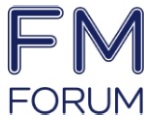FMs are under increasing pressure to optimise building maintenance while balancing cost control, operational efficiency, and regulatory compliance. With evolving safety regulations, rising energy costs, and an increasing focus on sustainability, effective strategies must prioritise preventative maintenance, smart technology integration, and long-term asset management. Here’s how FM’s attending the FM Forum are striking the right balance between cost, efficiency, and compliance while ensuring buildings remain safe, functional, and sustainable…
1. Prioritising Preventative and Predictive Maintenance
Reactive maintenance—waiting for equipment to break before repairing it—often leads to higher costs, unexpected downtime, and safety risks. Instead, facilities managers are shifting towards preventative and predictive maintenanceto:
✔ Reduce long-term costs – Regular servicing of HVAC, electrical, and plumbing systems prevents expensive emergency repairs.
✔ Extend asset life cycles – Scheduled maintenance helps avoid premature replacements.
✔ Ensure compliance – Regulatory bodies, such as the Health and Safety Executive (HSE) and Building Safety Act 2022, require facilities to maintain essential building systems proactively.
By leveraging IoT-enabled sensors and AI-driven analytics, facilities teams can predict equipment failures before they happen, further reducing costs and improving efficiency.
2. Leveraging FM Software for Smarter Operations
Modern software has transformed how buildings are maintained. By adopting cloud-based platforms, facilities managers can:
- Automate maintenance scheduling, reducing admin workloads.
- Track compliance requirements, ensuring all inspections and repairs meet UK legal standards.
- Monitor energy consumption, identifying cost-saving opportunities.
Real-time data analytics from FM software provides actionable insights, allowing teams to optimise resource allocation, contractor management, and budget planning.
3. Budgeting for Cost-Effective Maintenance
While reducing maintenance costs is essential, cutting corners can lead to safety risks and higher long-term expenses. To maintain a cost-effective strategy, facilities managers should:
✔ Adopt lifecycle costing – Investing in higher-quality, durable materials and energy-efficient systems reduces long-term maintenance costs.
✔ Outsource strategically – Partnering with specialist maintenance providers for critical assets (e.g., fire safety, HVAC) can save money over in-house teams.
✔ Take advantage of government incentives – Tax relief and grants for energy-efficient upgrades (e.g., heat pumps, LED lighting) help offset costs.
4. Meeting Compliance Standards
With stricter building safety and environmental regulations, ensuring compliance is non-negotiable. Facilities managers should:
- Conduct regular audits and inspections to meet fire safety, ventilation, and health regulations.
- Implement digital compliance tracking to avoid penalties and legal risks.
- Stay up to date with changing UK laws, particularly around sustainability and energy efficiency.
Optimising building maintenance in 2025 requires a strategic balance between cost, efficiency, and compliance. By adopting preventative maintenance, leveraging smart FM software, and planning budgets wisely, facilities managers can ensure safe, compliant, and cost-effective building operations that enhance asset longevity and workplace efficiency.
Are you searching for Building Maintenance & Refurbishment solutions for your organisation? The FM Forum can help!







